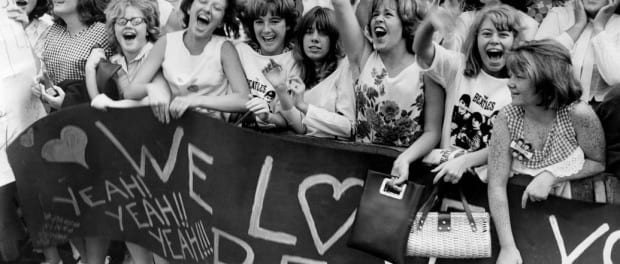There have been three massive revolutions in music in the past 50 years, say scientists from Queen Mary University of London. Researchers have been looking at different characteristics of music to see what really has been happening to mainstream music and how it’s developed over the last couple of decades.
“Music is declining.” It’s a thing people hear often; sat in my kitchen today and listening to ‘Love Cats’ by The Cure when my mum dramatically sighed and said “They just don’t make music like this anymore.” And no, maybe they don’t but that doesn’t categorically mean it’s wrong or bad. After looking at things such as harmonies, timbre, and choice of chords to see the diversity the university has come up with the outcome of three major revolutions.
“It’s a Revolution, I Suppose”
Most us have heard the story that the Beatles brought a revolution to music. Participating in this revolution included showing how rebellious you were by singing ‘Bad Boy’, serenading your girl with an out-of-tune rendition of ‘Here Comes the Sun’ (but it’s okay because she smiled through the pain and said “Babe, I loved it”) and melancholically laying on your bed empathising with lonely ‘Eleanor Rigby’.
The Beatles were involved in the first major musical revolution. Up until the 60s jazz and blues had been massively popular, but stylistic fingerprints such as dominant sevenths (a type of chord) began to fall from the charts. Instead British bands became prominent; from The Beatles to The Rolling Stones, a new rockier sound was taking over. This was the beginning of the “British Invasion” where British bands became massively popular in America and not only dominated our charts but theirs as well. We all know a One Direction fan who is borderline crazy, but she’d have nothing on some of the ‘Beatlemania’ girls. The rock and roll was full of attack, long gone were the days of odes to husbands at war and now the listeners were more than ready for a little bump and grind on the dance floor. It was fast tempos, energetic delivery of vocals and flamboyant guitar solos.
The next revolution was brought on by technology, a rise in synths, drum machines and samplers, the generation was much more experimental. Music was known to be crazily panned, some things hard right and some things hard left as it was new and exciting. Overdubbing (recording something over another recorded track) was also popular, according to Brian May, there are over 180 overdubs in ‘Bohemian Rhapsody’ to imitate a large choir. Quirky, jangly guitar based music was hitting the charts. Effects that could be placed on music, were. I’ve heard someone say that “Every band suddenly sounded like Duran Duran as the results of effects such as reverb on the drum”. It was dominated by keyboards, catchy hooks and dancey beats.
According to Dr Mauch, “The Third Revolution is the biggest. We looked at harmony – and rap and hip-hop don’t use harmony.” The lack of harmony means a boosted emphasis on speech sounds and the rhythm. It developed from MCing/rapping, DJing/scratching, breakdancing and graffiti writing. Sampling and Beatboxing was introduced to mainstream, the technology highly evolving into turntables, DAWs, drum machines and spoken vocals. 1990 was dubbed by the Billboard editor (Paul Grein) as “the year that rap exploded”. It was similar to rock and roll in that it was about rebellion, about sex, about a big beat and social context such as the political situation.
Music is constantly developing, constantly changing with the flow of the time, the changing technology and the generational access to music. With three massive revolutions over the last 50 years who knows that will be coming next.
Keep your eyes open, for the next revolution could be just around the corner.
Words by Megan Bakewell
